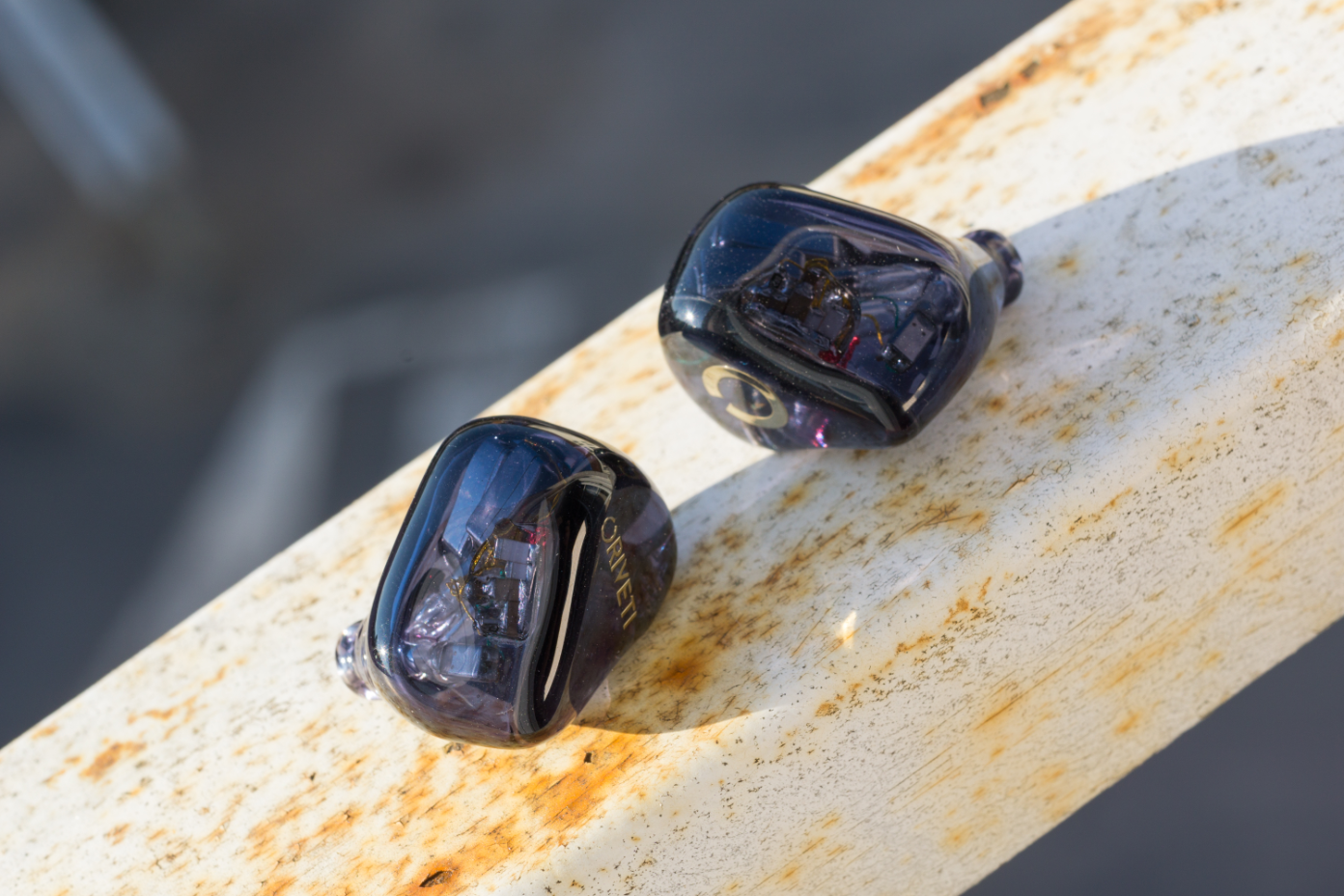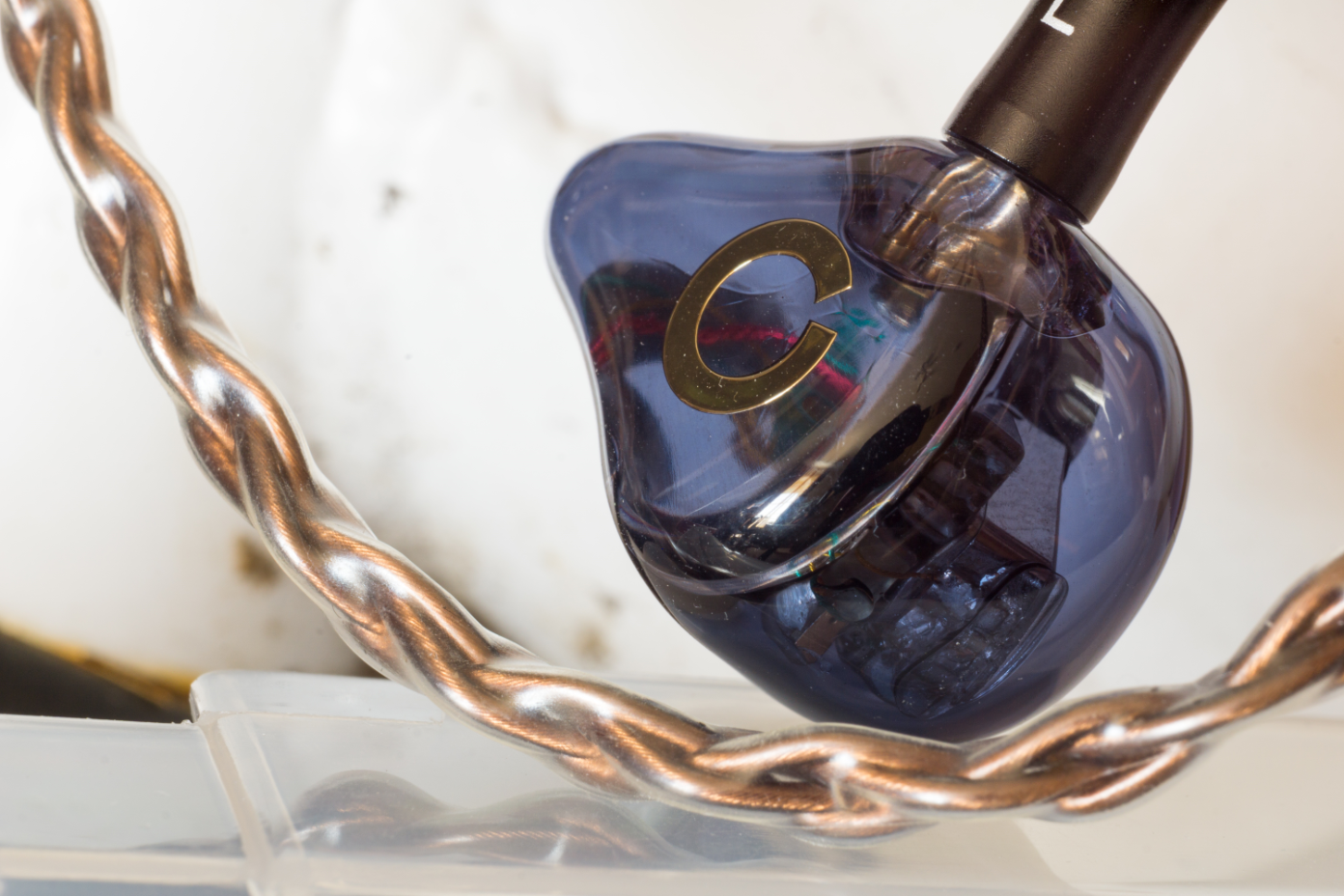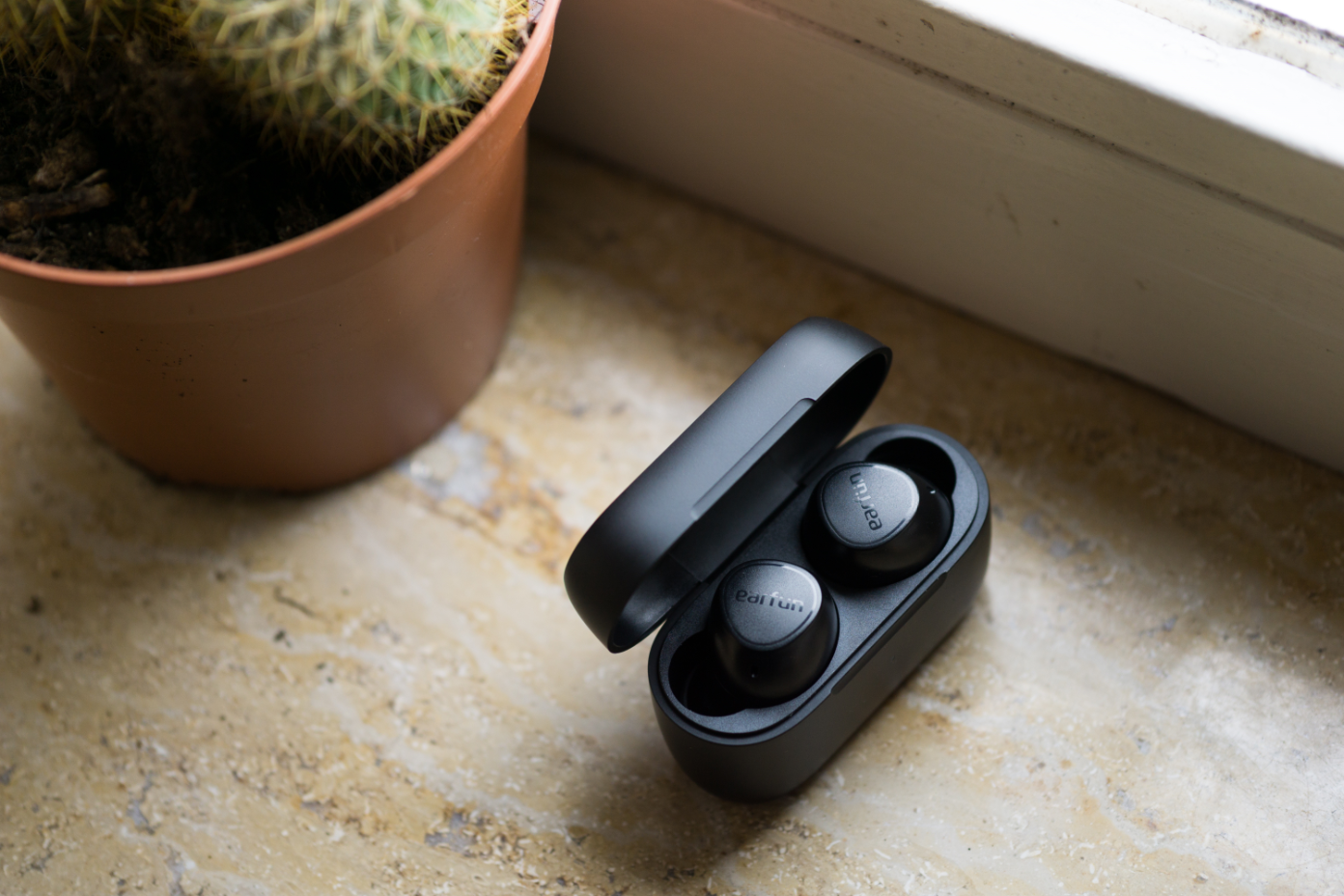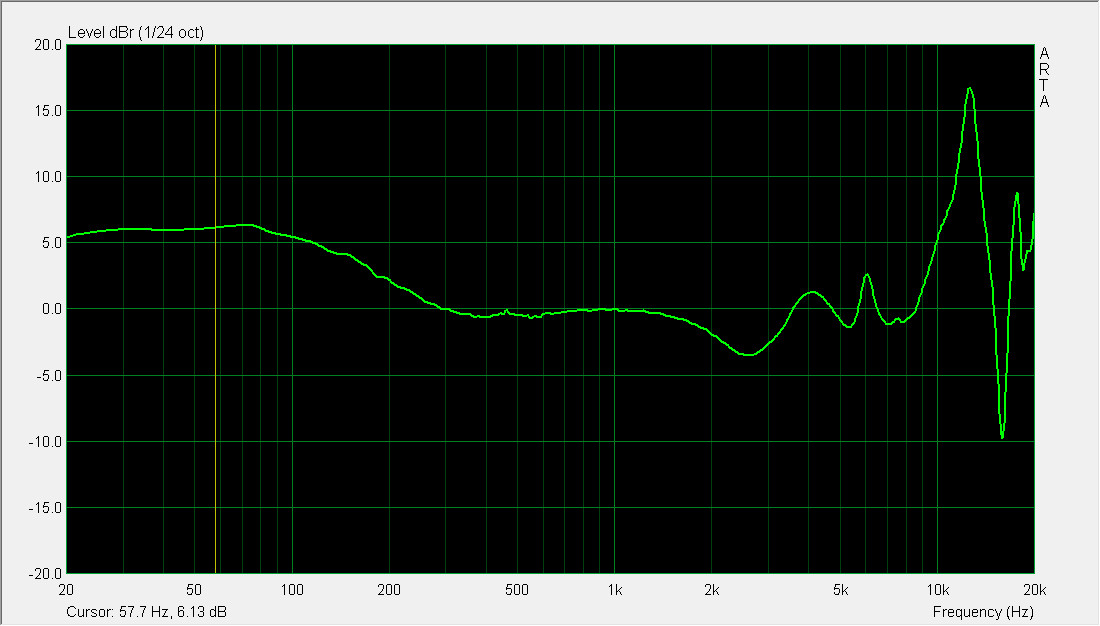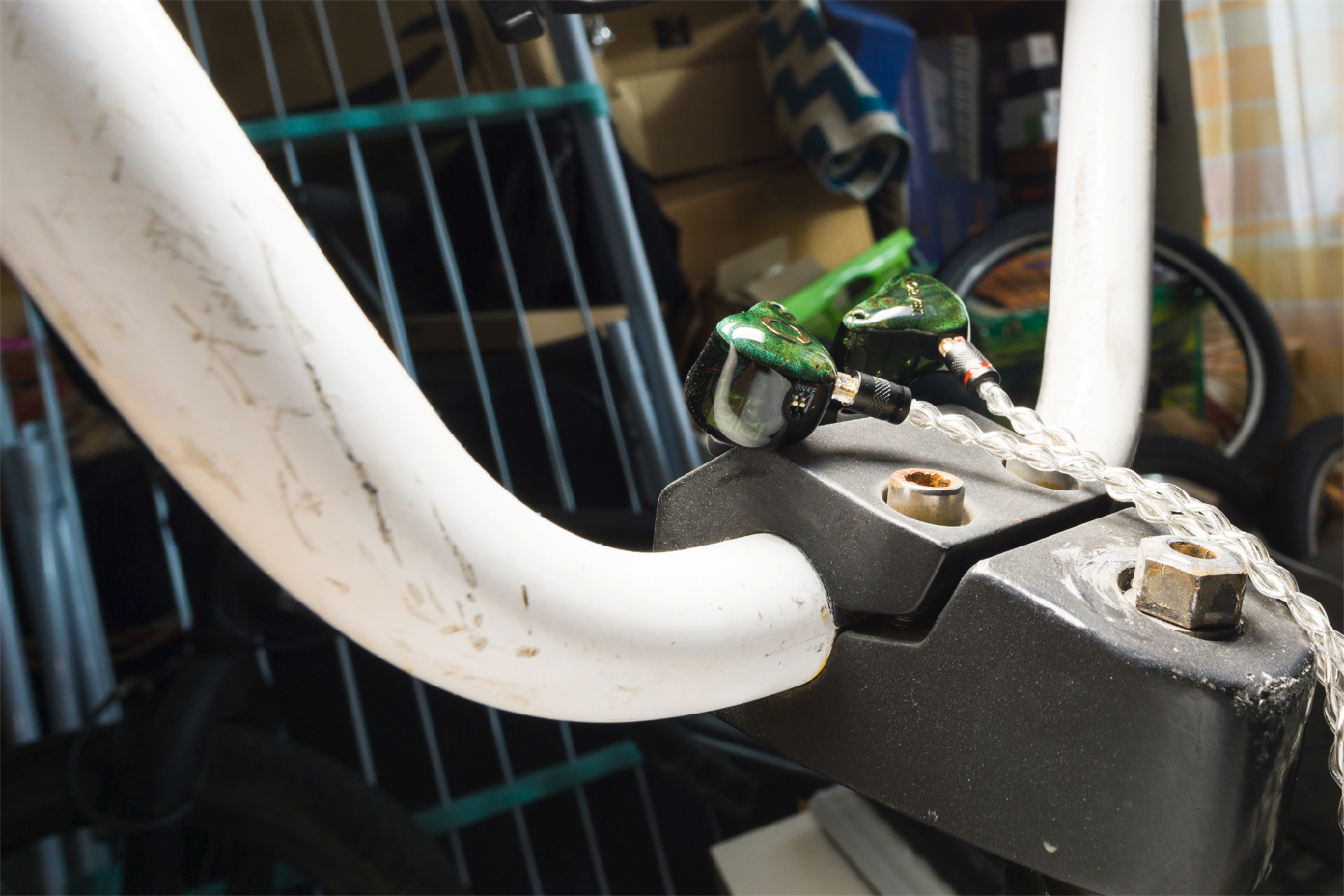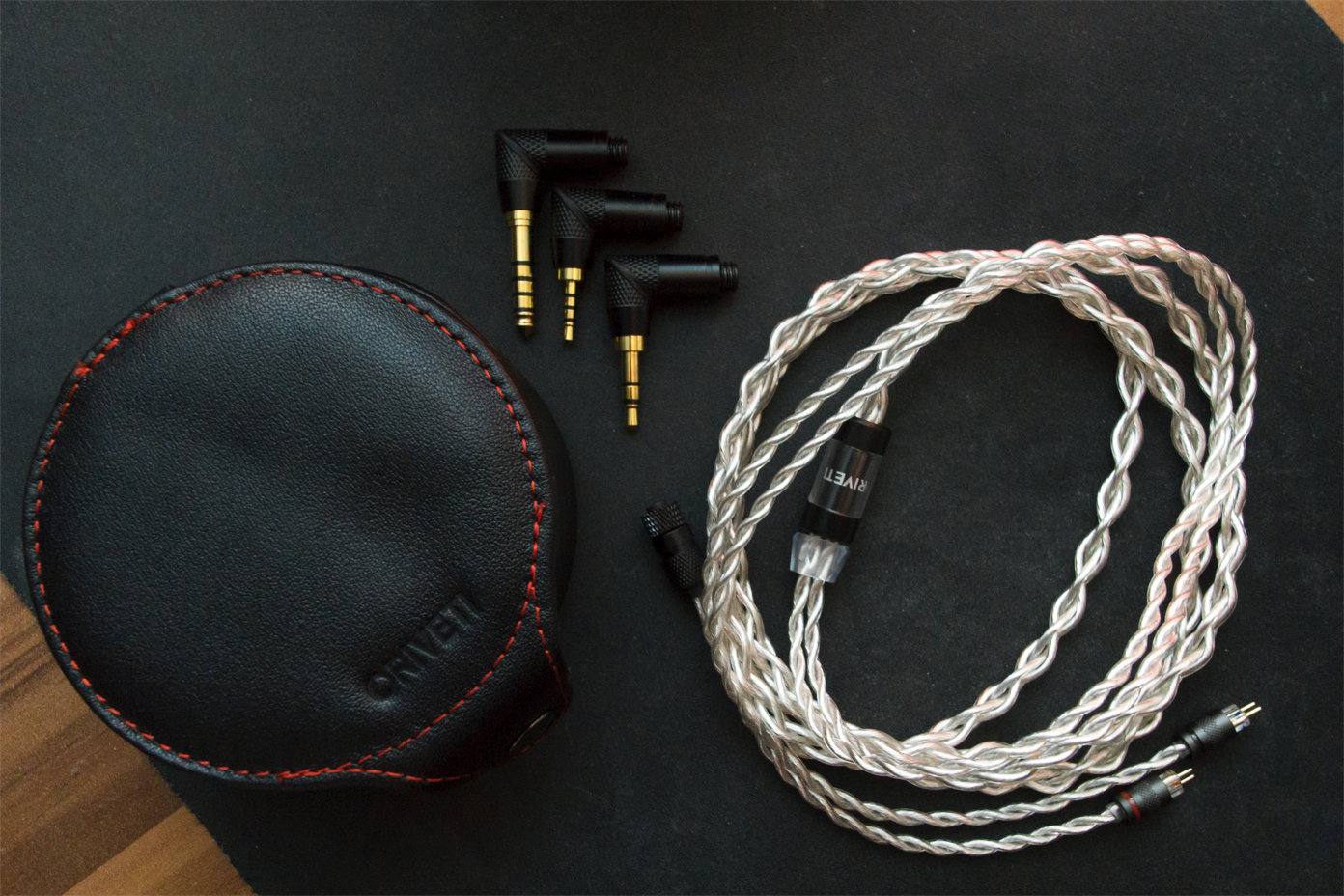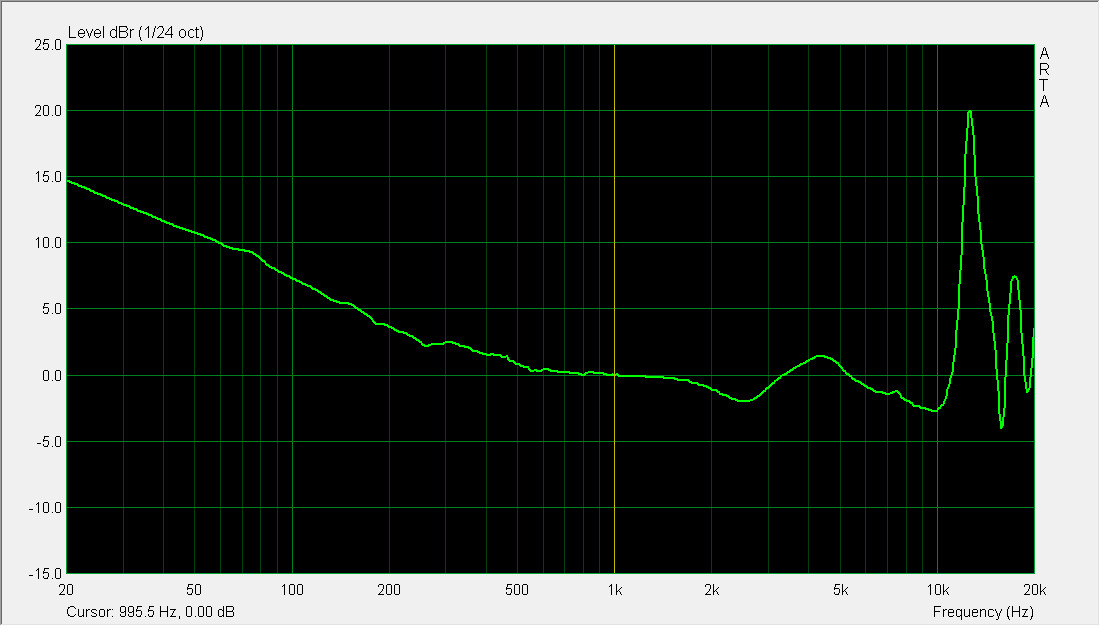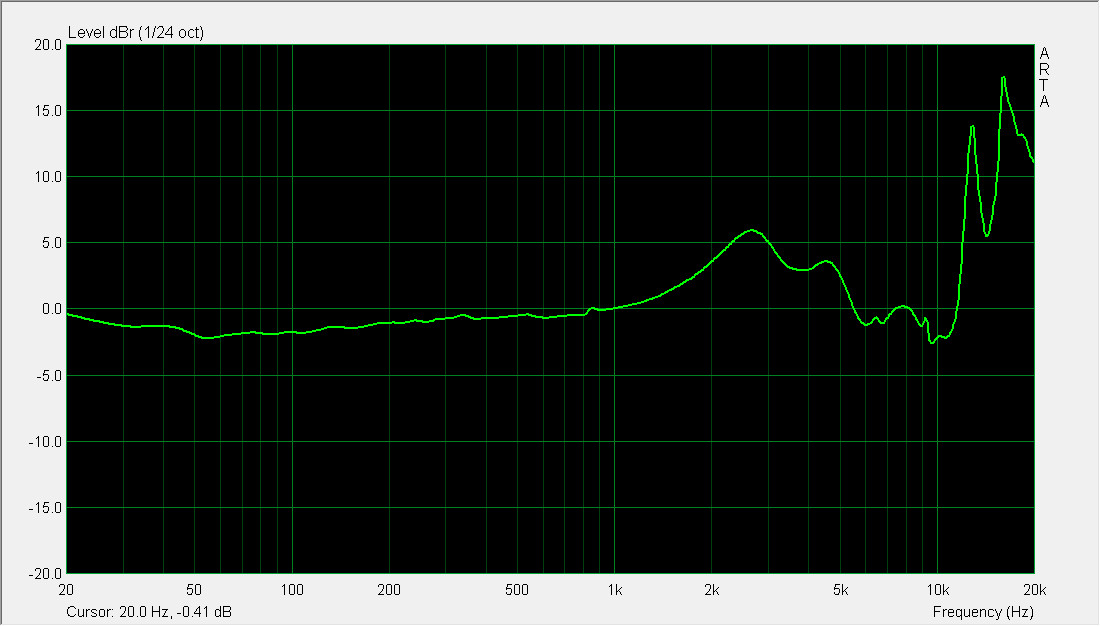CK Moustache
100+ Head-Fier
InEar StageDiver SD-2
Source:
Personal unit.
Miscellaneous:
Poor unboxing experience – plain plastic bag with carrying case, in-ears, two cleaning wipes, 6.35 to 3.5 mm adapter, three pairs of silicone tips.
It seems like InEar later switches to a more appealing and proper packaging, though.
Perfect shell design that provides an excellent fit, seal and ergonomics.
Build quality is high.
I quite like the glossy black shells.
The storage/carrying case is very good as it isn’t overly large and provides excellent protection along with being softly padded with silicone on the inside.
Replaceable cable with 2-pin connectors.
I really like the silver cable’s aesthetics (InEar seemingly later switched to a black cable instead).
Twisted conductors; soft and supple.
Two BA drivers per side, two-way design, single-bore construction.

Sound:
Largest included ear tips.
Tonality:
Warm-neutral.
The lows are elevated by around 5 dB by diffuse-field standards, which means that the SD-2 have got about 2 dB stronger bass quantity when compared to my Ultimate Ears Reference Monitors, and around 5 dB when compared to my Etymotic ER-4S.
It extends flat into the real sub-bass without any roll-off.
As the climax is already reached in the area of the lower fundamental range, with the elevation already taking place in the lower midrange, the SD-2 definitely have a somewhat warm tilt in the lows and also lower midrange – definitely comparable to my HiFiMan RE400i, although they are ultimately less warm in the lower mids but equally so in the midbass and lower fundamental range.
The midrange appears natural in tone but is nonetheless on the ultimately warmer side of neutral, with en emphasis on lower voices’ body.
The level takes a slight step back in the upper mids/presence range, although my SD-2 are ultimately still less relaxed here compared to my InEar ProPhile 8 wherefore they reproduce voices more intimately/closer to the listener than the ProPhile 8 that are more recessed in the presence range for a less “flat studio neutral” but more “natural neutral” tuning, whereas they are ultimately flatter in the lows and less relaxed in the highs than the SD-2.
The treble is generally and evenly in the background and features a remarkable level of evenness (no sudden dips or peaks) that is rather rarely reached, and as a result the upper-end presentation has got a high sense of realism and naturalness that comes very close to that of Etymotic’s in-ears. It comes back with a sort of “peak” just a little below 10 kHz, but one couldn’t actually call it such as it still remains below neutral in quantity.
Extension past 16 kHz is also surprisingly (exceptionally) good without any audible roll-off before 16 kHz.
Frequency Response:
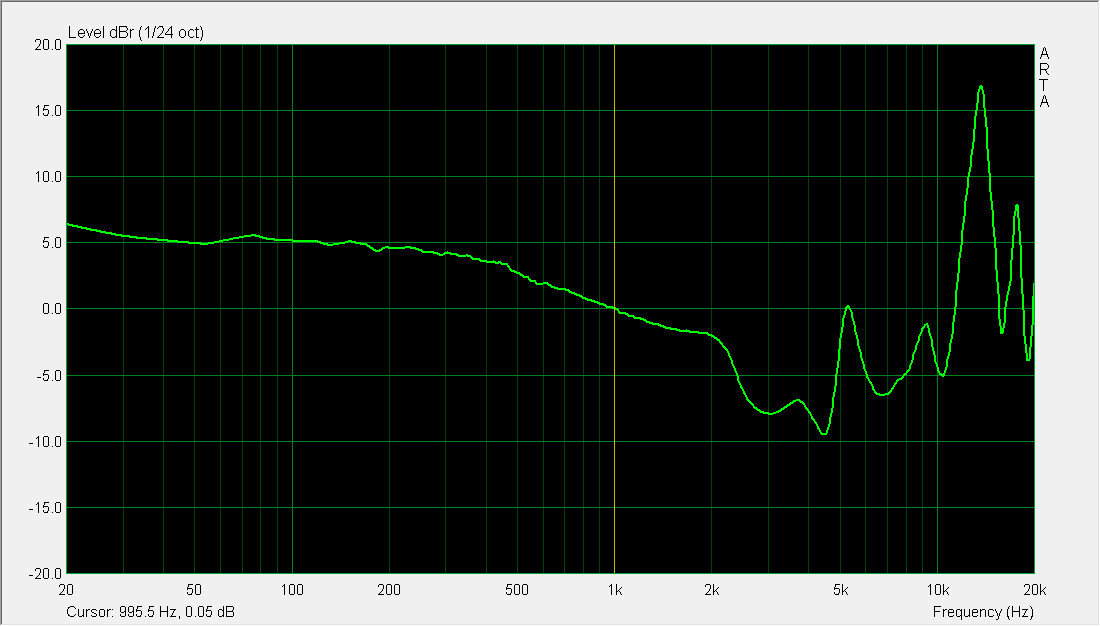
ER-4S-Compensation

ProPhile 8-Compensation
Resolution:
Very decent but cannot fully keep up with many of the better triple- and quad-BA in-ears (as well as some dual-BA models) around the same price (e.g. Fischer Amps FA-3E, Logitech/Ultimate Ears UE900, Westone W4R, Audio Technica ATH-IM03, Pai Audio MR3, Noble Audio SAVANNA or Jays q-JAYS (2nd generation)) in all areas, while it is ultimately somewhat above that of my Shure SE425.
The “problem” is definitely the SD-2s’ back-venting of the BA woofer – while it leads to a more visceral, body-oriented, dynamic driver-like presentation, the softer and slower implementation of the InEars’ back-venting leads to fast and complex bass attacks as well as transients sounding too soft for Balanced Armature standards, which is especially noticeable with fast and demanding tracks where the SD-2 cannot fully keep up and sound somewhat smeared.
While the control and speed are ultimately still slightly superior to some dynamic driver implementations, most of the Balanced Armature competitors are simply ahead in terms of bass technicalities and speed.
Then again, also thanks to the even tuning, the driver/crossover implementation sounds coherent, and the sound is generally natural and even, although just not with the speed, tightness and control that I’m used to and demand from multi-BA in-ears in this price range.
Otherwise, apart from to rather slow and soft woofer implementation, the general level of resolution is good to decent, but the slightly darker than neutral tuning ultimately emphasises the rather soft perception of transients to some degree.
To be fair, though, medium-paced music doesn’t stress the woofer or in-ears in general and they remain clean sounding as long as no sheer speed and technicalities are required.
Soundstage:
What’s quite remarkable, especially in this price range for multi-BA in-ears, is the SD-2s’ large, three-dimensional and lifelike soundstage reproduction that I previously only heard from several more expensive and/or custom-moulded multi-BA IEMs (with only very few exceptions that however ultimately don’t fully reach the InEars’ soundstage quality), and it’s definitely their core strength apart from the tonal evenness.
As such, the soundstage isn’t only very large and three-dimensional (wherefore layering and the perception of spatial depth are excellently reproduced as well), but also quite precise.
Instruments and single layer levels are easy to differentiate and also separated quite precisely wherefore this leads to a highly realistic presentation.
Spatial control/imaging precision is on a fairly high technical level as well, although a bit of blur occurs once the lows on the track are too technically demanding and/or fast, since then the rather soft and slow implementation of the back-venter BA woofer also starts to show up when it comes to instrument separation.
Ultimately one shouldn’t fully expect the spatial precision and size of in-ears such as my Ultimate Ears Reference Monitors or NocturnaL Audio Atlantis, nonetheless the SD-2 are quite a unicorn when it comes to the three-dimensional soundstage reproduction among comparably priced multi-BA in-ears.

Conclusion:
Warm-neutral tuning with a very even and realistic, mildly relaxed treble presentation and convincing three-dimensional soundstage packed into highly ergonomic shells.
While the general level of resolution is decent, the bass and transients are however somewhat too much on the softer and slower side for Balanced Armature standards, wherefore the SD-2 are just a tiny bit shy of getting the “Recommended” award.
Photos:
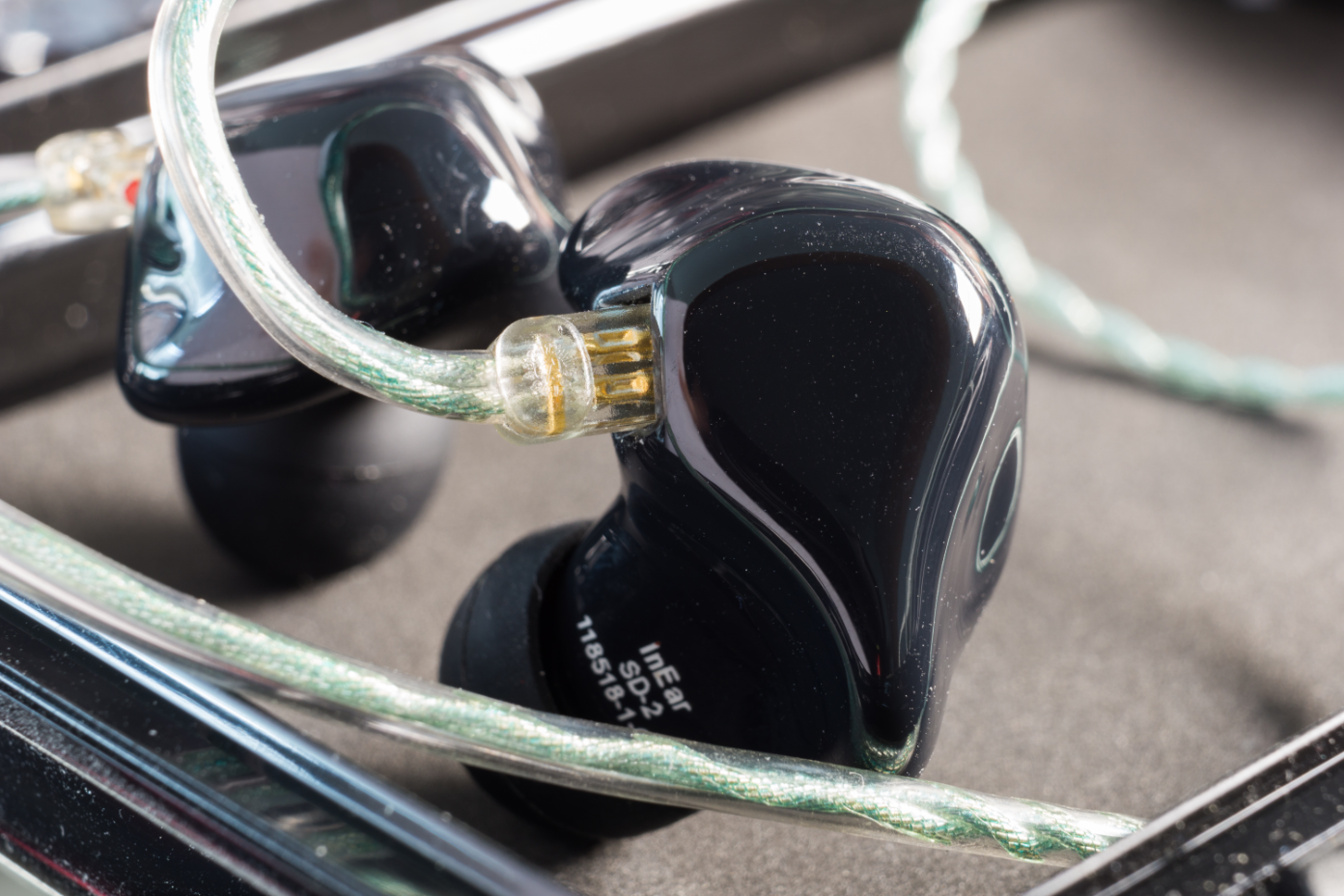
Source:
Personal unit.
Miscellaneous:
Poor unboxing experience – plain plastic bag with carrying case, in-ears, two cleaning wipes, 6.35 to 3.5 mm adapter, three pairs of silicone tips.
It seems like InEar later switches to a more appealing and proper packaging, though.
Perfect shell design that provides an excellent fit, seal and ergonomics.
Build quality is high.
I quite like the glossy black shells.
The storage/carrying case is very good as it isn’t overly large and provides excellent protection along with being softly padded with silicone on the inside.
Replaceable cable with 2-pin connectors.
I really like the silver cable’s aesthetics (InEar seemingly later switched to a black cable instead).
Twisted conductors; soft and supple.
Two BA drivers per side, two-way design, single-bore construction.

Sound:
Largest included ear tips.
Tonality:
Warm-neutral.
The lows are elevated by around 5 dB by diffuse-field standards, which means that the SD-2 have got about 2 dB stronger bass quantity when compared to my Ultimate Ears Reference Monitors, and around 5 dB when compared to my Etymotic ER-4S.
It extends flat into the real sub-bass without any roll-off.
As the climax is already reached in the area of the lower fundamental range, with the elevation already taking place in the lower midrange, the SD-2 definitely have a somewhat warm tilt in the lows and also lower midrange – definitely comparable to my HiFiMan RE400i, although they are ultimately less warm in the lower mids but equally so in the midbass and lower fundamental range.
The midrange appears natural in tone but is nonetheless on the ultimately warmer side of neutral, with en emphasis on lower voices’ body.
The level takes a slight step back in the upper mids/presence range, although my SD-2 are ultimately still less relaxed here compared to my InEar ProPhile 8 wherefore they reproduce voices more intimately/closer to the listener than the ProPhile 8 that are more recessed in the presence range for a less “flat studio neutral” but more “natural neutral” tuning, whereas they are ultimately flatter in the lows and less relaxed in the highs than the SD-2.
The treble is generally and evenly in the background and features a remarkable level of evenness (no sudden dips or peaks) that is rather rarely reached, and as a result the upper-end presentation has got a high sense of realism and naturalness that comes very close to that of Etymotic’s in-ears. It comes back with a sort of “peak” just a little below 10 kHz, but one couldn’t actually call it such as it still remains below neutral in quantity.
Extension past 16 kHz is also surprisingly (exceptionally) good without any audible roll-off before 16 kHz.
Frequency Response:

ER-4S-Compensation

ProPhile 8-Compensation
Resolution:
Very decent but cannot fully keep up with many of the better triple- and quad-BA in-ears (as well as some dual-BA models) around the same price (e.g. Fischer Amps FA-3E, Logitech/Ultimate Ears UE900, Westone W4R, Audio Technica ATH-IM03, Pai Audio MR3, Noble Audio SAVANNA or Jays q-JAYS (2nd generation)) in all areas, while it is ultimately somewhat above that of my Shure SE425.
The “problem” is definitely the SD-2s’ back-venting of the BA woofer – while it leads to a more visceral, body-oriented, dynamic driver-like presentation, the softer and slower implementation of the InEars’ back-venting leads to fast and complex bass attacks as well as transients sounding too soft for Balanced Armature standards, which is especially noticeable with fast and demanding tracks where the SD-2 cannot fully keep up and sound somewhat smeared.
While the control and speed are ultimately still slightly superior to some dynamic driver implementations, most of the Balanced Armature competitors are simply ahead in terms of bass technicalities and speed.
Then again, also thanks to the even tuning, the driver/crossover implementation sounds coherent, and the sound is generally natural and even, although just not with the speed, tightness and control that I’m used to and demand from multi-BA in-ears in this price range.
Otherwise, apart from to rather slow and soft woofer implementation, the general level of resolution is good to decent, but the slightly darker than neutral tuning ultimately emphasises the rather soft perception of transients to some degree.
To be fair, though, medium-paced music doesn’t stress the woofer or in-ears in general and they remain clean sounding as long as no sheer speed and technicalities are required.
Soundstage:
What’s quite remarkable, especially in this price range for multi-BA in-ears, is the SD-2s’ large, three-dimensional and lifelike soundstage reproduction that I previously only heard from several more expensive and/or custom-moulded multi-BA IEMs (with only very few exceptions that however ultimately don’t fully reach the InEars’ soundstage quality), and it’s definitely their core strength apart from the tonal evenness.
As such, the soundstage isn’t only very large and three-dimensional (wherefore layering and the perception of spatial depth are excellently reproduced as well), but also quite precise.
Instruments and single layer levels are easy to differentiate and also separated quite precisely wherefore this leads to a highly realistic presentation.
Spatial control/imaging precision is on a fairly high technical level as well, although a bit of blur occurs once the lows on the track are too technically demanding and/or fast, since then the rather soft and slow implementation of the back-venter BA woofer also starts to show up when it comes to instrument separation.
Ultimately one shouldn’t fully expect the spatial precision and size of in-ears such as my Ultimate Ears Reference Monitors or NocturnaL Audio Atlantis, nonetheless the SD-2 are quite a unicorn when it comes to the three-dimensional soundstage reproduction among comparably priced multi-BA in-ears.

Conclusion:
Warm-neutral tuning with a very even and realistic, mildly relaxed treble presentation and convincing three-dimensional soundstage packed into highly ergonomic shells.
While the general level of resolution is decent, the bass and transients are however somewhat too much on the softer and slower side for Balanced Armature standards, wherefore the SD-2 are just a tiny bit shy of getting the “Recommended” award.
Photos:






















